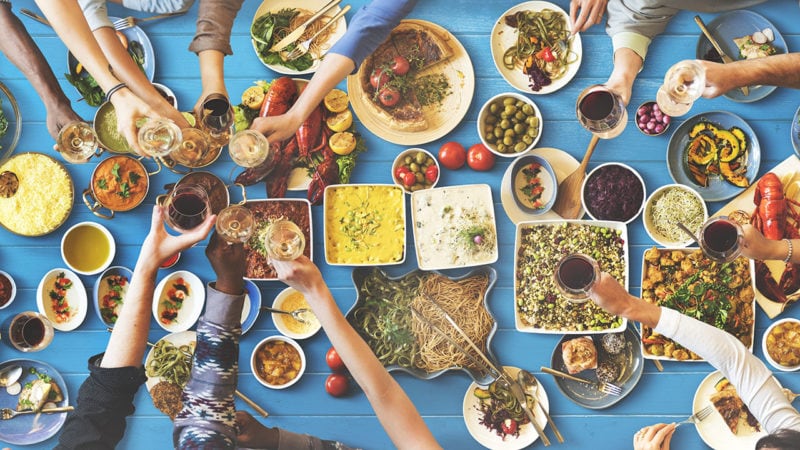Last Updated on January 27, 2025
When ButcherBox first launched a blog, the idea was to share interesting information about food and give folks easy recipes to feel confident cooking a variety of meats. Since then, we’ve expanded Just Cook to improve upon those initial aspirations by creating content to challenge aspiring chefs in the kitchen with some more challenging recipes, share the stories about the amazing people who we see as kindred spirits in our mission to change the current (broken) food system and to be transparent about how we balance the conflict of being both a mission-driven business AND a company selling meat across America.
One of our core values at ButcherBox is relentless improvement. And with Just Cook, our videos from the ButcherBox Test Kitchen, and the other media projects we are developing, we have been striving to improve how we respect the culinary traditions and represent the food cultures that are outside of our limited purviews.
One area in which we were naive when we launched Just Cook was how we handled food and recipes from cultures outside of our own experiences and how our content reflected the diversity of the world outside our little pocket of the northeast.
We thought we were doing enough, but, after some introspection, it was clear that we were erring when it came to giving certain foods and recipes the appropriate historical deference and making foolish mistakes in culturally appropriating cuisines from other cultures.
Since then, we have been learning, debating, and acting to make sure we give food cultures and histories across the world—and even in our own country—the appropriate respect in all we do.
Cultural Appropriation and Food
We found a lot of value in learning to understand the difference between cultural appropriation and culture diffusion, as shown in the talk, “Culinary Justice: Defining a Theory of Gastronomic Sovereignty,” given by culinary historian Michael Twitty at the University of Michigan in 2017.
As Twitty explains, people often “get cultural appropriation confused with cultural diffusion.”
Here is how he defines both:
Cultural diffusion is “a natural process when people of multiple different cultures live close together in some environment and can’t help but rub off on one another” according to Twitty.
Conversely, “Cultural appropriation is about exploitation, abuse, theft,” he explains. “You know it when you see it, just like obscenity. You know it when you see it. So don’t get the two confused.”
In the talk, Twitty further explains the importance of culinary justice, which is about, “the cuisine of a people being a source of cultural power that they have an inherent right to. It’s their thing that they use to mitigate the forces of oppression. And when you take that thing away, then you’re really robbing them of something very significant.”
There are a few other sources that have helped us understand foodways, cultural appropriation, and representation that add to Twitty’s thoughts including Ruth Tam’s “How It Feels When White People Shame Your Culture’s Food — Then Make It Trendy,” in the Washington Post and Bettina Makalintal’s “When It Comes to a Recipe, What’s In a Name?” from Vice.
As a food brand, we need to be respectful of all foodways and cuisines. When reviewing a potential article or recipe, we are asking:
- What experiences does the author have with the cuisine from which they are writing a recipe? Did they learn it from a family member? From working with a chef who passed on the cooking knowledge of their cultural foodway?
- If the recipe is from another culture than that of the author, does the author pay proper respect to the foodway and cuisine represented? Is appropriate credit and history for the inspiration and origin of the cuisine acknowledged and any reference material included?
- If an instance of cultural diffusion—a fusion dish, for instance—are the different foodways included being acknowledged correctly?
- When we are unsure if any content is an instance of cultural appropriation, we ask for help and the insights of members of the DEI committee.
Addressing Our Missteps and Improving Just Cook
To be honest, we’ve made a ton of missteps when it comes to food, cultural appropriation, and representation.
We painted with broad strokes when it comes to food fusions. We misidentified traditional regional recipes that included ingredients not native to those areas. We shared recipes important to food cultures in Asia, Africa, Latin America, and the Pacific without explaining the important histories of those dishes.
Over the past two years, armed with more knowledge on the subject, we have been dedicated to improving these areas in which we faltered.
We’ve changed recipe names that were incorrect or misleading. We’ve asked our employees to share through Just Cook their own familial food histories that are important to them. We have taken and are continually taking steps to make sure we give the appropriate cultural significance to recipes.
But we have more work to do.
Here is what we’ve prioritized thus far:
- We have expanded our pool of writers from two bloggers and two recipe writers to a group of more than 30 writers located across the world—many of whom incorporate their own personal food experiences in their work. Prior to 2021, 2% of our recipes were created by BIPOC recipe developers. In 2021, 24% of recipes were created by BIPOC recipe developers.
- We have sought out experts on cultural appropriation and food. Shared what we’ve learned across the company and applied the best practices.
- We have audited and continue to audit and update our recipes to make sure that the recipes or stories we share give the historical culinary significance to the recipes that are part of the cultural foodways within the U.S. and across the globe. Here are two examples: “Homemade Chinese Noodle Soup and Bone Broth” and “Nigerian Chicken Suya Skewers.”
- The editorial team and DEI committee have continued to meet to review concerns with content. We have taken steps to improve recipes and other content based on the guidance from the committee.
At the end of the day, giving the proper respect to the important cuisines of more cultures is the right thing to do for anyone working in the food space.
We’ve seen more people engaging with the new content; one example is the “Chinese Noodle Soup” recipe that was read more than other recipes and stories we published in the same month.
But more than doing the right thing or getting these incredible recipes in front of new audiences, we’ve seen our co-workers connect to the foodways of their families and cultures through recipes that mean a great deal to them personally.
It is incredible to imagine how we’ve been able to introduce new foods and experiences to the dinner tables of those who read Just Cook or order ButcherBox through these recipes and stories we have shared.
Dennis Keohane is a writer, editor, and former Editorial Director for ButcherBox with a passion for storytelling and food. Combining his love for high-quality ingredients with engaging narratives, he crafts content that inspires home cooks to explore new flavors, techniques, and the joy of cooking.



